207. The Difference between Internal Rhymes and External Rhymes
Internal vs External
External Rhymes fall at the ends of lines and are generally part of a Rhyme Scheme (see section 203). An Internal Rhyme is when at least one word of the Rhyming pair falls somewhere inside the stanza or line. There are two kinds of Internal Rhyme: Random and Structured.
Think of it like this:
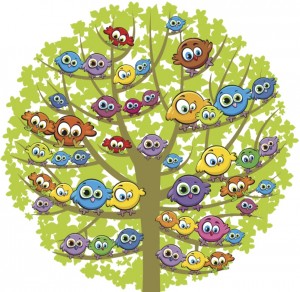

←Internal Rhyme
External Rhyme→
A Note about Stanzas and Rhyme Schemes. If you aren’t familiar with Stanzas and Rhyme Schemes, you can click over: 202 Stanzas and 203 Rhyme Schemes. They are both really simple concepts.
External Rhymes

 External Rhymes fall at the ends of lines. While most Rhyme Schemes contain rhymes at the ends of every line, some contain rhymes at the end of every other line. One important feature of External Rhymes is that they are mandatory. An External Rhyme is an integral part of your Rhyme Scheme and if it is missing, the story or poem will seem flawed.
External Rhymes fall at the ends of lines. While most Rhyme Schemes contain rhymes at the ends of every line, some contain rhymes at the end of every other line. One important feature of External Rhymes is that they are mandatory. An External Rhyme is an integral part of your Rhyme Scheme and if it is missing, the story or poem will seem flawed.
Internal Rhymes: Random & Structured
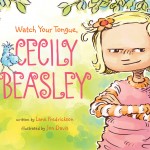 There are two types of Internal Rhymes: Random and Structured.
There are two types of Internal Rhymes: Random and Structured.
Random Internal Rhymes are simple; they can fall anywhere in close enough proximity that the sound feels repeated. Sound repetition makes a story or poem feel unified and clever. The rhymed words can be in two separate lines of a couplet or tercet, or they can be in the same line. Internal Rhymes often go entirely unnoticed, like this line from Watch Your Tongue, Cecily Beasley :

External Rhyme:
poLITE/NIGHT.
Internal Rhyme:
BEAS (in BEASley)/ PLEASE
Below is another example of Internal Rhyme. See if you can find it.

External Rhyme:
nouns/clowns.
Internal Rhyme:
snappy (line #1)/happy (line #2).
Since the snappy/happy rhyme is so close together (only two words separate it) the sentence has a really cohesive sound. The two examples above show Internal Rhymes in two separate lines, but Internal Rhymes can also come in the same line. The great thing about a Random Internal Rhyme is that you aren’t constricted by form, the rhyming words can come anywhere. And while they go largely unnoticed by readers, they make a work SOUND more fun and clever. The following lines have two Internal Rhymes in addition to an External Rhyme.

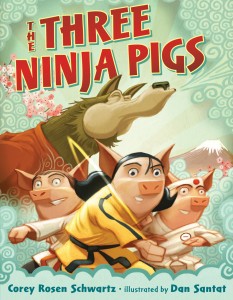 External Rhyme: vaCATION/celeBRATION
External Rhyme: vaCATION/celeBRATION
Internal Rhyme line #1: eight/wait
Internal Rhyme line #2: sledding/getting
So if the above are Random Internal Rhymes, then what are Structured Internal Rhymes? Structured Internal Rhymes are rhymes that fall in a predictable position within the line. So they are like External Rhymes in that they are predictable and part of a structure, but they are like Random Internal Rhymes in that they do not fall at the ends of lines. The next two examples come from The Three Ninja Pigs by the very talented Corey Rosen Schwartz.
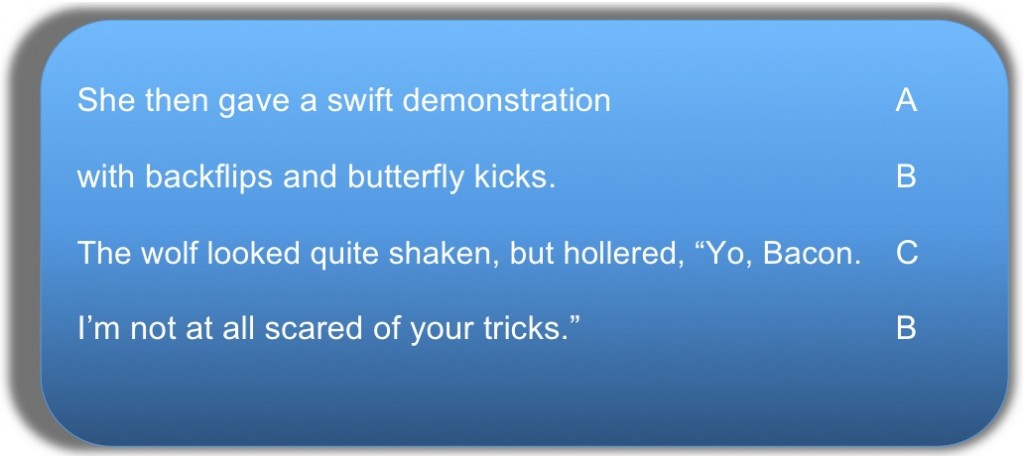
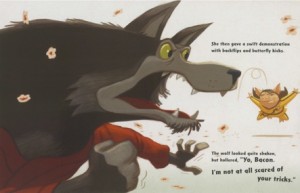 Notice that this Stanza is laid out as an ABCB Rhyme Scheme and that the Internal Rhyme, shaken/bacon, falls on the second and fourth beats in the third like (line C). Every stanza in the book has an Internal Rhyme on the second and fourth beats of the third line and THAT is what makes it a Structured Internal Rhyme. Also remember that an Internal Rhyme only needs one of its rhymed pairs to be inside the line; it’s still an Internal Rhyme if one of the rhymed words is also part of the External Rhyme.
Notice that this Stanza is laid out as an ABCB Rhyme Scheme and that the Internal Rhyme, shaken/bacon, falls on the second and fourth beats in the third like (line C). Every stanza in the book has an Internal Rhyme on the second and fourth beats of the third line and THAT is what makes it a Structured Internal Rhyme. Also remember that an Internal Rhyme only needs one of its rhymed pairs to be inside the line; it’s still an Internal Rhyme if one of the rhymed words is also part of the External Rhyme.
But here is a great lesson in why you should really read the sections on Meter: this Rhyme Scheme can actually be written in two different ways. And BOTH are correct. The Meter throughout this story is Anapestic, but the line length changes on the third line of each Stanza from trimeter to tetrameter and then back to trimeter on the fourth. It can be read like this: 3/3/4/3. Those numbers represent he number of STRESSED syllables in each line (also called beats). But you could also lay out the story like this:
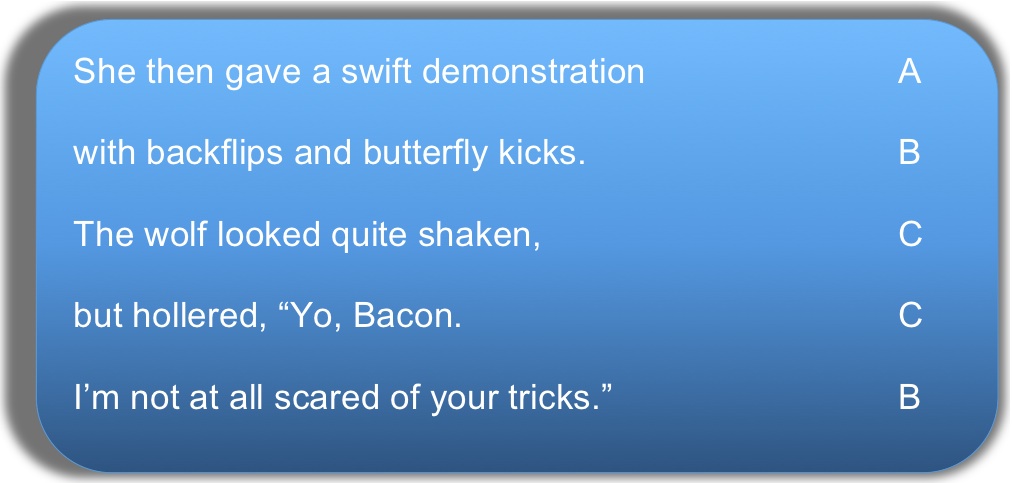
Now the Rhyme Scheme looks like this: ABCCB. And the beat count looks like this: 3/3/2/2/3, but there is NO LONGER an Internal Rhyme. All you’ve done is divide up that third line that has the Structured Internal Rhyme. So, Structured Internal Rhymes can almost always make your Rhyme Scheme and line length negotiable.
For more ways to make your story sound better, read 204 Slant Rhymes. Plenty of great works use an occasional slant rhyme as an external rhyme. You just don’t want to rely on them. But with internal rhymes, slants don’t really matter. Internal rhymes are used to add an extra bonus of repeated sound. There is no law, and no internal rhyme police, and most of the time, no one will even notice that you made an internal rhyme. So Slant Rhymes are good, very good. Add them at will. Also, read section 208 Consonance, Assonance, and Alliteration for ways to use sound to make your story sound better.
